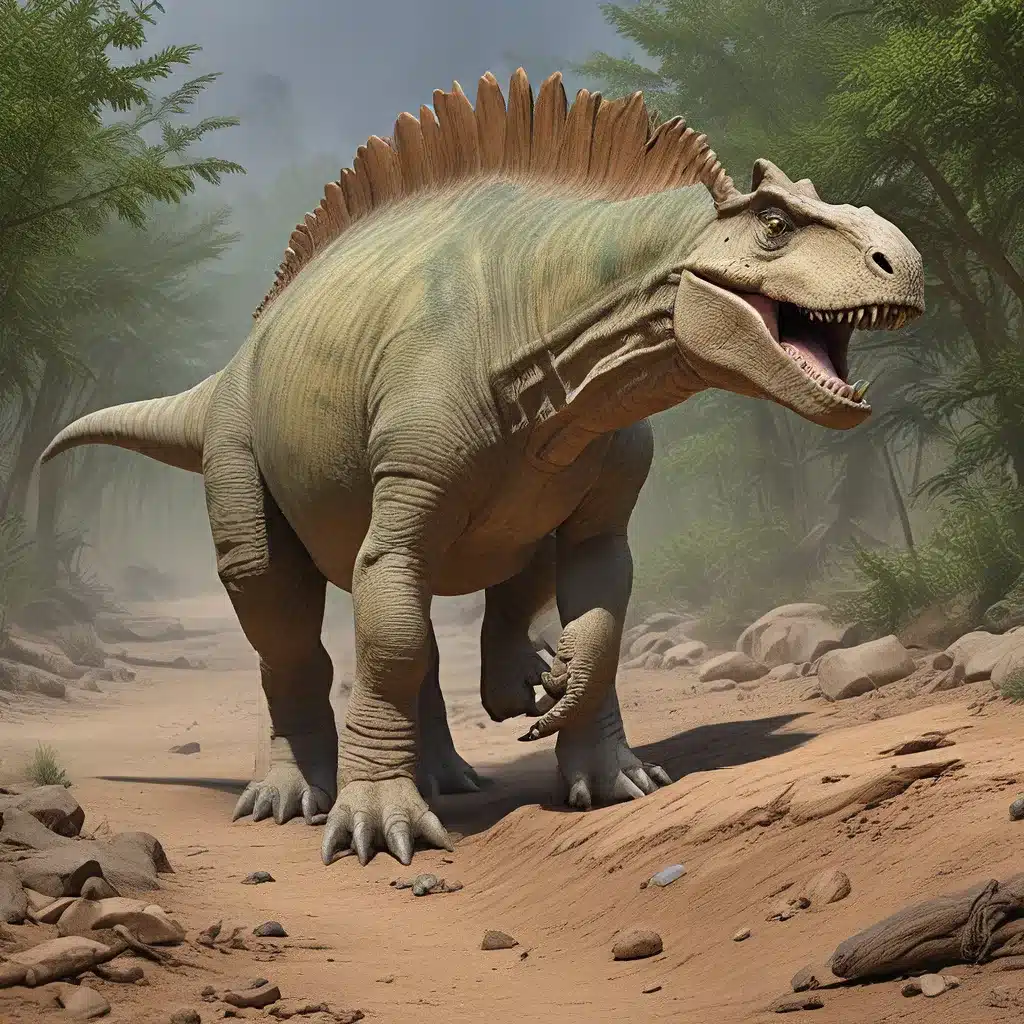
The Iguanodon: Unearthing a Prehistoric Giant
The Iguanodon, a name meaning “Iguana-tooth,” has captivated the imagination of scientists and enthusiasts alike since its discovery in the early 19th century. This herbivorous behemoth, which roamed the Earth during the Early Cretaceous Period, approximately 157.3 to 110 million years ago, has a fascinating and somewhat convoluted history of discovery and classification.
The story of the Iguanodon’s discovery is as intriguing as the creature itself. In 1822, Mary Ann Mantell made the first known discovery of this dinosaur, finding a single tooth in Sussex, England. It was not until 1825 that Gideon Mantell solidified the Iguanodon’s name and classification. However, the most significant discovery occurred on February 28, 1878, in a coal mine at Bernissart, Belgium, where mineworkers Jules Créteur and Alphonse Blanchard stumbled upon a skeleton initially mistaken for petrified wood at a depth of 1,056 feet underground.
This remarkable find, which turned out to be Iguanodon remains, was the largest of its kind at the time. The subsequent description by George Albert Boulenger in 1881, based on these well-preserved fossils, provided a more accurate and comprehensive understanding of the Iguanodon, leading to the introduction of the species Iguanodon bernissartensis and its designation as the type species for the genus.
The Anatomy and Adaptations of the Iguanodon
The Iguanodon, particularly the well-documented species Iguanodon bernissartensis, boasts a remarkable anatomy that reflects its herbivorous lifestyle and adaptation to its environment. Its head, characterized by robust jaws and those iconic iguana-like teeth, was well-suited for a plant-based diet. The neck, supported by a series of strong vertebrae, connected the head to a sturdy, well-proportioned body.
One of the most notable features of the Iguanodon was its limbs, as the dinosaur was able to walk on four legs. The tail, long and muscular, provided balance and potentially served as a defensive tool. While the exact texture and color of its skin remain speculative, it likely offered protection and possibly camouflage in its natural habitat.
Based on the type species Iguanodon bernissartensis, we have a fairly clear picture of the size and weight of this prehistoric giant. Adult individuals are estimated to have measured around 30 feet in length, with the maximum body length reaching an impressive 36 feet. In terms of weight, estimates for Iguanodon bernissartensis generally fall between 34 to 42 tons, reflecting its robust build and significant presence in the Early Cretaceous landscapes.
The Enigmatic Thumb Spike
One of the Iguanodon’s most distinctive characteristics was its thumb spike, a peculiar adaptation that has puzzled and fascinated paleontologists for years. This spike, potentially used for defense or foraging, highlights the Iguanodon’s adaptability and survival instincts.
The function of the Iguanodon’s thumb spike has been a subject of much debate among researchers. Some believe it was used for defense against predators, while others suggest it may have played a role in foraging or even social communication. The presence of this unique feature sets the Iguanodon apart from many other dinosaurs and highlights the diversity of adaptations that evolved during the Cretaceous period.
The Iguanodon in Its Ecosystem
The Iguanodon did not exist in isolation but rather thrived in a complex and dynamic ecosystem, sharing its world with a variety of other prehistoric creatures. Baryonyx, a fearsome predator with crocodile-like jaws, posed a potential threat to the Iguanodon, as it was slightly smaller but no less intimidating. Imagine the tension in the air as an Iguanodon encountered a Baryonyx near a water source, with the Iguanodon’s strong limbs and thumb spikes serving as tools in a defensive dance.
The Iguanodon also shared its habitat with the Hypsilophodon, a much smaller dinosaur that likely scampered around the Iguanodon’s feet, perhaps feeding on the scraps of vegetation left behind by the larger herbivore. This subtle relationship highlights the interconnectedness of the Iguanodon’s ecosystem, where various species coexisted and played their roles in the grand story of life.
Other contemporaries of the Iguanodon included the Polacanthus and Hylaeosaurus, both armored dinosaurs roughly the same size as the Hypsilophodon. While these creatures likely did not compete directly with the Iguanodon for food, they may have vied for territory, creating a complex web of interactions within the prehistoric landscape.
The Iguanodon’s Legacy and Ongoing Research
The Iguanodon stands as a central figure in the ancient world, with its interactions, both tense and benign, shaping the intricate tapestry of life during the Early Cretaceous period. As our understanding of this remarkable dinosaur continues to evolve, new discoveries and analyses shed light on its place in the prehistoric ecosystem.
Remarkable specimens, such as those found in the Bernissart coal mine, have been instrumental in expanding our knowledge of the Iguanodon. These well-preserved fossils have provided invaluable insights into the dinosaur’s anatomy, behavior, and role within its environment. The Royal Museum in Brussels, for instance, has showcased Iguanodon skeletons presented as bipedal animals, a testament to the ongoing evolution of our understanding of dinosaur anatomy and locomotion.
As we continue to unravel the enigmas surrounding the Iguanodon, from the function of its thumb spike to its social interactions, we gain a deeper appreciation for the complexity and diversity of the prehistoric world. The Iguanodon’s legacy lives on, inspiring scientists, enthusiasts, and the public alike to explore the wonders of this ancient giant and the ancient civilizations that coexisted with it.
To learn more about the Iguanodon and other fascinating dinosaurs, visit The Lost Kingdoms, where you can discover a wealth of information and resources on the captivating world of prehistoric life.


